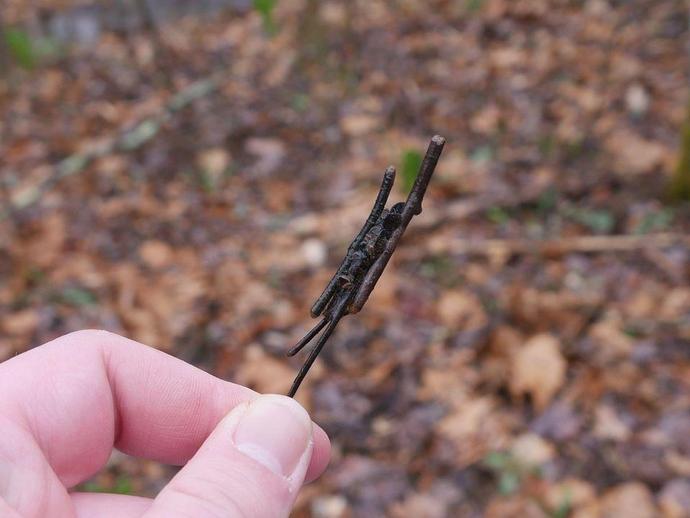September 26, 2020
Moving forward, #BenInNature will highlight a previously posted nature update every Saturday and Sunday, but don't fret fans! New updates will continue to be posted Monday - Friday! The following post was originally published March 30, 2020.
At first glance, these photos might look like I just found some twigs that got stuck together ... and that's exactly what the caddisfly wants you to think. Caddisflies (order Trichoptera) are a large group of insects that spend their larval stage underwater. As adults they resemble small moths, and with good reason; they're closely related to moths and butterflies. The adults are also known as "sedgeflies," and most fly fishermen probably have a few flies in their tackle box designed to resemble adult caddisflies. Within the order Trichoptera, there are two suborders: Integripalpia and Annulipalpia. Annulipalpia larvae produce silk and create a fixed cocoon-like structure; they hide inside this structure and wait for food to float past the opening. Integripalpia (of which the pictured caddisfly larva is a member) are go-getters; they spin a silk casing and carry it around with them, often attaching sticks, leaves, grains of sand and other debris to the casing to help it blend in to the surrounding stream bed. Caddisfly larva don't just grab anything they see to incorporate into their mobile homes, however; the specific types of debris they attach to their silk cases are determined by their genetic makeup, meaning that you can identify a caddisfly larva down to its family or even genus just based on the construction of its protective casing. If you're poking around in your nearest creek and you find a bunch of caddisflies, consider it a good sign. They're sensitive to water pollution, so if you can find caddisflies, chances are good that you have a healthy creek. #BenInNature
ABOUT #BenInNature
Social distancing can be difficult, but it presents a great opportunity to become reacquainted with nature. In this series of posts, Administrator of Science Ben Williams ventures outdoors to record a snapshot of the unique sights that can be found in the natural world. New updates are posted Monday - Friday, with previous posts highlighted on the weekends.
NATURE PHOTO IDENTIFICATIONS
If you discover something in nature that you would like help identifying, be sure to message us right here on Facebook with a picture (please include location and date of picture) and we'll have our experts help you identify it!

 Hours & Admissions
Hours & Admissions Directions
Directions

